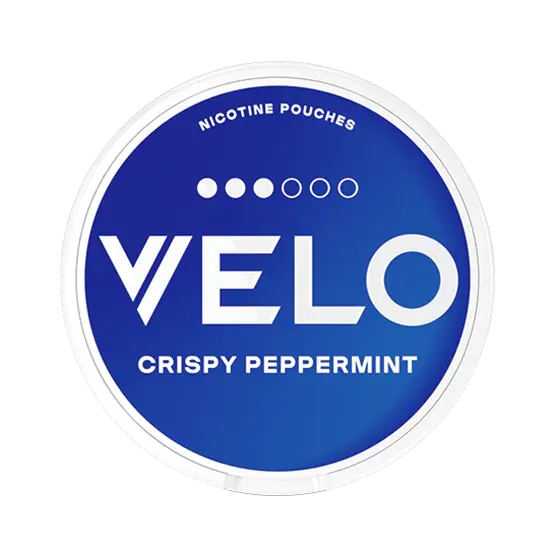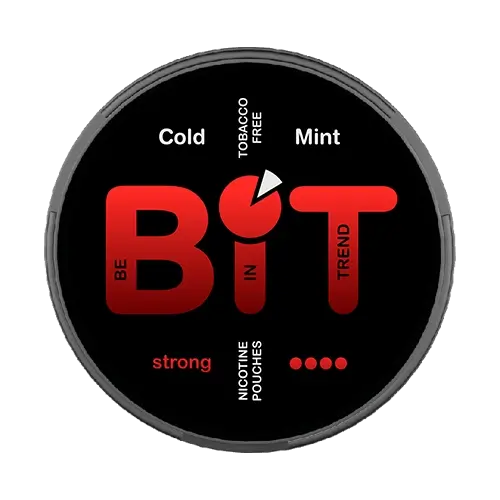Can Nicotine Pouches Help You Quit Smoking?
Smoking remains one of the leading preventable causes of death worldwide. Despite growing awareness of its health risks, millions continue to smoke due to the addictive nature of nicotine and the habitual aspects of smoking. In recent years, nicotine pouches have emerged as a popular alternative to traditional tobacco products — but can they actually help people quit smoking for good? Can Nicotine Pouches Help You Quit Smoking? (ZYN, VELO, White Fox, Pablo)

In this article we explore the potential of nicotine pouches as a smoking-cessation aid. From how they work, to their pros and cons, to how to use them effectively — we’ll cover everything you need to know if you’re considering this smoke-free solution as a path to quitting.
Understanding What Nicotine Pouches Are
Nicotine pouches are small, white sachets free of tobacco leaf, containing nicotine along with natural fibres, flavourings, sweeteners, and stabilisers. Unlike cigarettes or chewing tobacco, nicotine pouches do not involve combustion or burning of tobacco. Instead, the user places the pouch between the upper lip and the gum: the nicotine is absorbed through the oral mucosa and enters the bloodstream.
These pouches typically come in a range of nicotine strengths (from ~2 mg up to ~20 mg per pouch) and a wide variety of flavours, including mint, citrus, berry, coffee and more. The flavour and strength options give users a tailored experience that can be adapted to their needs, making them a versatile option for people who want to reduce or eliminate their cigarette habit.
Brands such as VELO, White Fox, Pablo and ZYN have driven the rapid growth in the nicotine-pouch market across Europe and North America. Their appeal to smokers lies in delivering nicotine without the smoke, smell or social stigma of cigarettes — enabling discreet use, even in smoke-free or indoor environments.
How Nicotine Pouches Can Support Smoking Cessation
Nicotine pouches function similarly to other nicotine-replacement therapies (NRTs) such as gums, patches, and lozenges. They deliver a controlled dose of nicotine to the body, satisfying the chemical addiction without exposing users to the thousands of harmful chemicals found in burning tobacco.
Here’s how they help in the quitting journey:
-
Nicotine Replacement: When you stop smoking, your body begins to crave nicotine immediately, which often leads to irritability, headaches, mood swings, and intense urges. Nicotine pouches can provide the nicotine your body is used to — without lighting a cigarette. Studies show that oral nicotine pouches in 3 mg and 6 mg strengths significantly reduced cigarette smoking over four weeks among adults willing to use them. PMC+1
-
Oral Habit Satisfaction: Smoking is not only chemical but behavioural — the hand-to-mouth motion, the feel of something in your mouth, the ritual. Nicotine pouches satisfy part of that habit in a way that patches or medications may not.
-
Gradual Reduction: Users can begin with higher strength pouches and gradually step down to lower strength as their nicotine dependence decreases. This tapering approach reduces shock to the system and may improve success.
-
Situational Support: Because they are discrete, portable and don’t produce smoke or ash, nicotine pouches are ideal in high-risk situations such as social events, long drives or work breaks — times when you formerly would have smoked.
Hence, nicotine pouches serve as both a chemical and behavioural bridge from smoking to a nicotine-free lifestyle.
The Advantages and Limitations of Using Pouches to Quit
While nicotine pouches offer several clear benefits, they are not a magic bullet. It’s important to understand both sides.
Advantages:
-
Tobacco-free: They don’t contain actual tobacco leaf, which reduces exposure to tar and many tobacco-related carcinogens. PMC+1
-
Smoke-free: No combustion, no second-hand smoke, no typical smoker smell or staining of teeth/fingers.
-
Discreet: Can be used indoors, at work, or in social situations without drawing attention.
-
Customisable: Choose flavours and nicotine strengths that meet your personal need.
-
Portable: Small tins or canisters, easy to carry and use without big equipment or accessories.
Limitations:
-
Still Addictive: Nicotine itself is addictive whatever its delivery method. Pouches may reduce harm but not eliminate addiction. Bloomberg School of Public Health
-
Gum/Oral Sensitivity: Some users report mild irritation under the lip, gum sensitivity or “tingling” when using pouches frequently.
-
Not FDA-Approved for Cessation (U.S): Unlike nicotine gums or patches which have official approval for smoking cessation, most pouch brands are not formally approved in that way. sph.rutgers.edu
-
Potential for Misuse or Dual Use: Some people may simply add pouches on top of cigarettes (rather than replacing) — leading to continued nicotine dependence or dual-product use. Johns Hopkins University
It’s crucial to view nicotine pouches as a tool within a quitting plan — not as a permanent substitute. When used with intention and a clear goal, they can be highly effective.
Real-World Evidence & Harm Reduction
Emerging scientific evidence supports the role of nicotine pouches in tobacco-harm reduction. A 2024 study found that using 3 mg and 6 mg oral nicotine pouches significantly reduced cigarette consumption over four weeks among adult smokers willing to switch. PMC Another review concluded that tobacco-free nicotine pouches (TFNPs) have lower levels of harmful toxicants compared to combustible cigarettes or smokeless tobacco, and may therefore support harm-reduction efforts. PMC+1 According to the Global State of Tobacco Harm Reduction (G S T H R), nicotine pouches “have the potential to make a significant contribution to tobacco-harm reduction” when used by people who smoke high-risk products. Global State of Tobacco Harm Reduction
However, it’s important to note that no product is entirely risk-free. The experts at Johns Hopkins Bloomberg School of Public Health note that although nicotine pouches may be less dangerous than smoking, they are not “harm-free”. Bloomberg School of Public Health

How to Use Nicotine Pouches as Part of a Quitting Plan
If you’re considering switching to nicotine pouches to quit smoking, you’ll get the best results if you incorporate them into a structured strategy. Here’s a suggested framework:
Step 1: Assess your current usage
Determine how much you smoke, when you light-up (e.g., first thing in the morning, after meals, during stress). This will help you decide how many pouches you may need to replace those triggers.
Step 2: Choose a starting strength
If you are a heavy smoker (e.g., a pack/day or more), consider starting with a higher‐strength pouch (e.g., 12–16 mg). Moderate smokers can start with 6–8 mg. Light or social smokers might start with 3–4 mg. Use flavours you like (mint, coffee, berry) so the experience is pleasant.
Step 3: Replace, don’t add
Only use a nicotine pouch when you would have lit a cigarette. The aim is to replace your cigarette habit—not to increase nicotine consumption. For example: instead of smoking during your lunch break, use a pouch at that time.
Step 4: Set a reduction schedule
Every 2-3 weeks, attempt to step down to a lower-strength pouch. For instance: 12 mg → 8 mg → 4 mg → 2 mg → eventually none. The body adapts gradually and withdrawal may be smoother.
Step 5: Monitor your progress
Keep a journal or use a mobile app to record: the time you would normally smoke, the pouch you used, cravings experienced, mood, triggers, slips or relapses. Seeing your journey unfold can be a powerful motivator.
Step 6: Combine with behavioural support
Nicotine pouches address the chemical side of the addiction, but quitting smoking is also psychological. Combine the pouch strategy with counselling, support groups, CBT techniques (cognitive-behavioural therapy), changing routines (e.g., avoid the “smoke break” habit), and building new coping strategies.
Brands & Options: VELO, White Fox, Pablo & More
If you’re ready to make the change, brands such as VELO, White Fox, Pablo, and ZYN have become widely available. They come in varying nicotine strengths, flavour profiles (mint, coffee, cola, berry) and packaging options. Many users find that the flavour choice and strength control make the transition easier.
Nicotine pouches are now shipped globally, making them accessible from most markets. Whether you’re looking for tobacco-free snus alternatives or simply a smoke-free way to satisfy nicotine cravings, they present a strong option — when used responsibly.
Final Thoughts: Are Nicotine Pouches Right for You?
In short: yes—nicotine pouches can be a valuable tool to quit smoking, but only when used properly, with a clear plan and realistic goals. They offer a cleaner, more discreet alternative to smoking, reduce exposure to many of the harmful chemicals found in cigarettes, and help satisfy both chemical cravings and behavioural triggers.
That said, their success depends on your approach:
-
Use them as part of a quitting journey (not indefinite).
-
Step down strengths gradually.
-
Combine with behavioural support.
-
Monitor your usage and avoid “dual use” (pouches + cigarettes).
-
Recognise that nicotine is still addictive — the ultimate goal should be nicotine-free.
If you’re ready to quit smoking and looking for an effective, modern aid, nicotine pouches may offer that stepping stone toward a healthier, smoke-free life.






